On May 15, Jean Oi, the William Haas Professor of Chinese Politics in the Political Science Department at Stanford University, gave a lecture themed “The Fate of China’s Development Model.” This was the 10th talk under the China Studies Lecture Series in the 2023-2024 academic year. The event was co-hosted by Brent Haas, Associate Dean of Yenching Academy, and Frank Hawke, Director of the Stanford Center at Peking University (SCPKU).
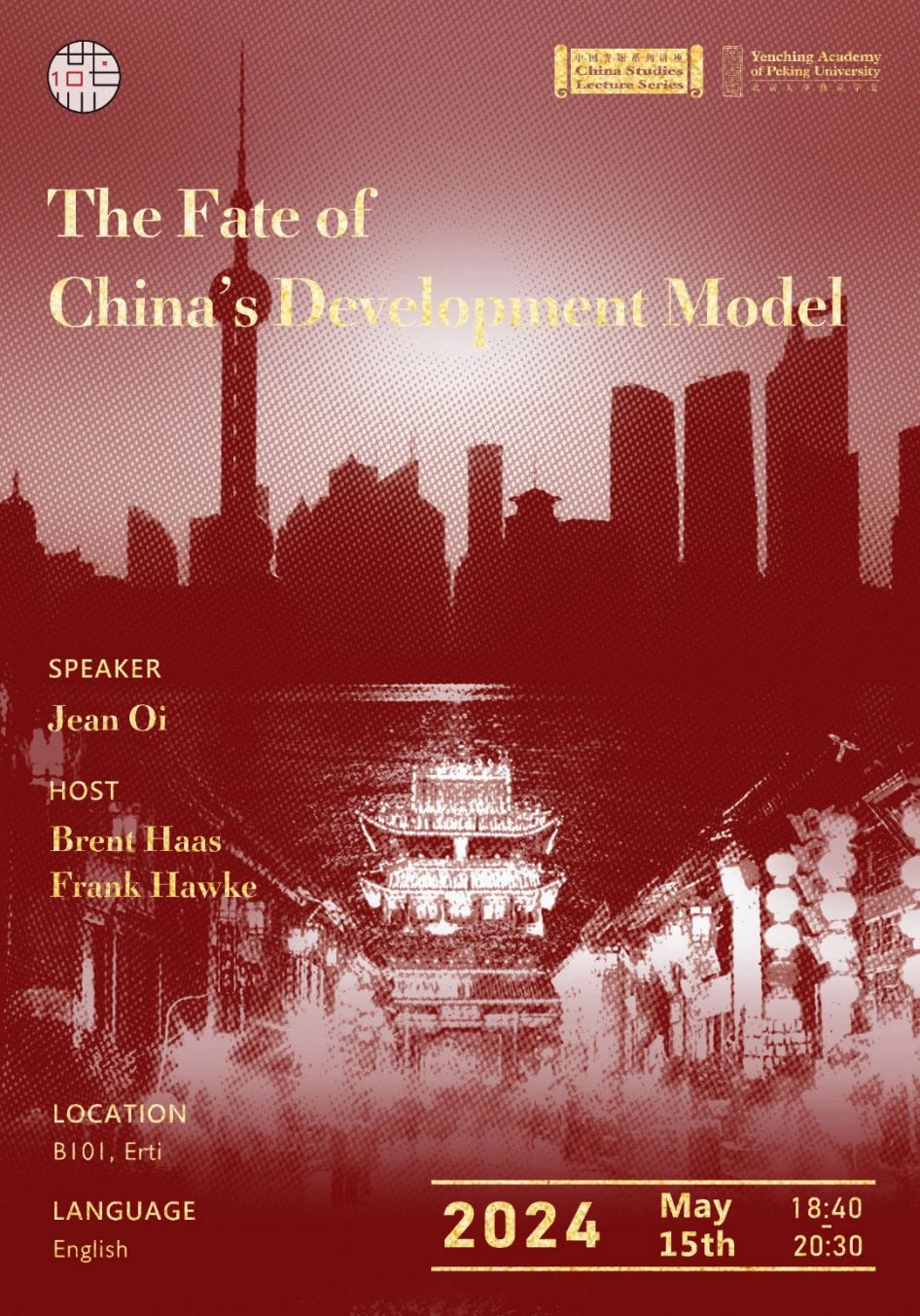
Review of the Lecture
Prof. Oi opened her lecture by discussing the current problems and challenges facing China’s economy and the prospects for the country’s development model. Her research, which focuses on the role of local governments, argues that China’s economic miracle has mainly been materialized by local officials. She emphasized that local governments have been critical to the country’s economic growth since the 1980s.
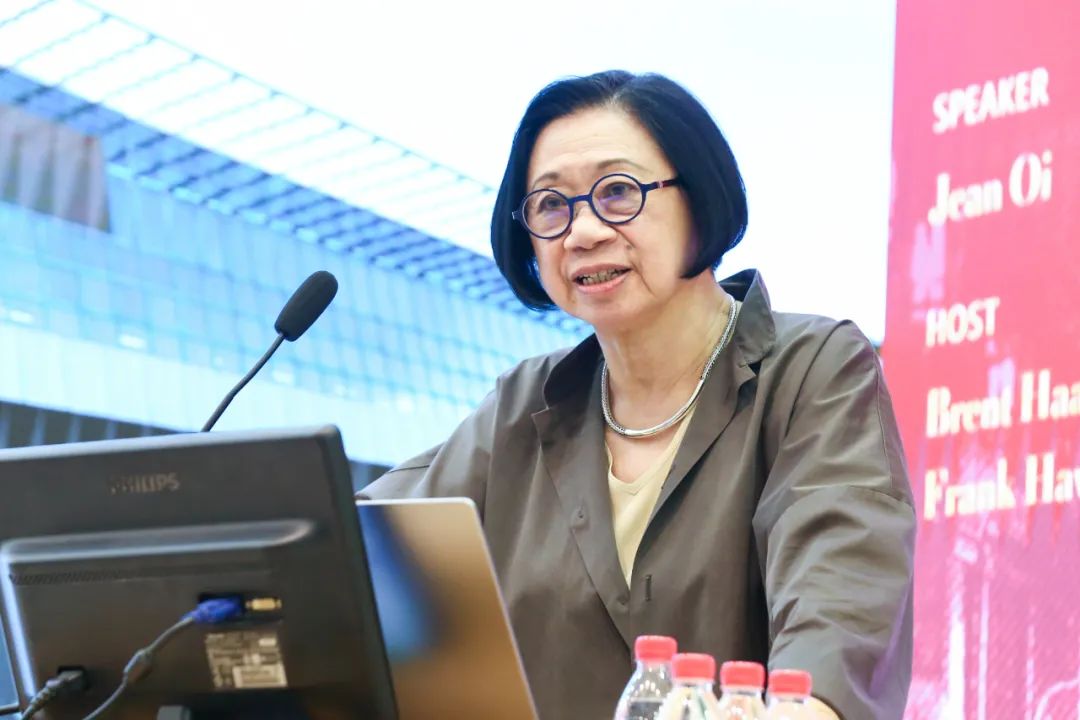
Prof. Oi introduced the concept of local state corporatism, describing the multilayer cooperation system within China’s economy. In 1980, the Chinese government implemented a fiscal reform that divided income and expenditure responsibilities between the central and local governments. This new fiscal system allowed local governments to retain surplus taxes and extrabudgetary revenues from collective-owned and private enterprises, which they reinvested in rural economic growth. However, by 1993, despite the national economy’s double-digit growth, the central government only received 22% of the total revenue, prompting a comprehensive tax reform to establish a revenue-sharing system between local authorities and the central government. In this reorganized tax system, central and local taxes were in place, enabling the central government to retain 75% of value-added taxes. In the meantime, the centralization of taxes led to decreased local government income but increased local expenditures, resulting in fiscal deficits.
A compromise was reached between the central and local governments to keep local authorities motivated. This compromise allowed local governments to generate nontaxable revenues and access financing through local government financial vehicles (LGFVs). LGFVs are state-owned enterprises that raise funds for local infrastructure and urban construction projects via land finance: State-owned enterprises acquire land from the local government at a low price and resell the land to real estate companies. This land finance system binds the local budget with the real estate sector and enables the local government to maintain a high level of economic growth via borrowing and investment.
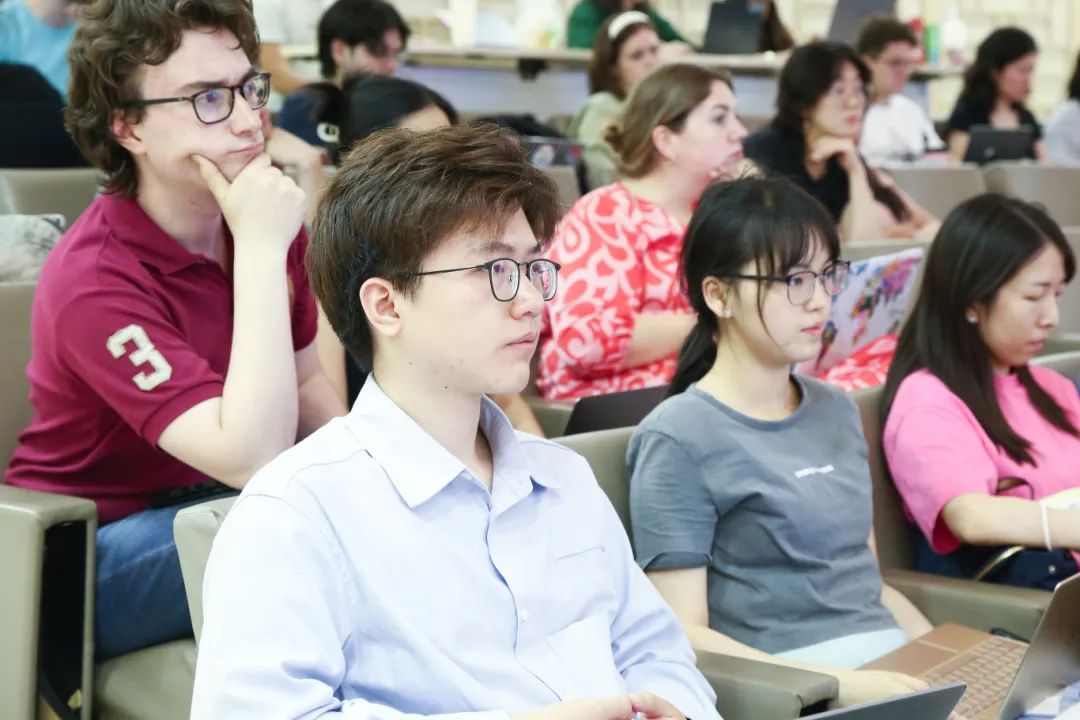
However, the three-year-long COVID-19 pandemic destabilized this system, reducing local income sources and exacerbating local government debts. Around mid-2020, the central government imposed stricter financial disciplines on the real estate and technology sectors. Nonetheless, this intensified local financial pressure and resulted in fiscal deficits estimated at nearly 10 trillion US dollars, imposing a critical threat on local and global financial markets. In some localities, the authorities failed to provide public services and pay their civil servants. The key to solving the problem lies in how local governments cope with such economic challenges.
To this end, some local governments shifted their development focus from real estate to emerging industries and manufacturing. Prof. Oi highlighted Shandong province’s efforts to build integrated production parks centered around aluminum companies, forming local supply chains and attracting large enterprises. This strategy promotes industrial integration, lowers production costs, and increases production efficiency by connecting nearby supply chain components and logistics centers. The method indicates a model shift from protecting traditional enterprises to nurturing emerging businesses. In some localities, success has been achieved through innovative industrial diversification. For instance, textile factories have been transformed into medical supplies manufacturers.
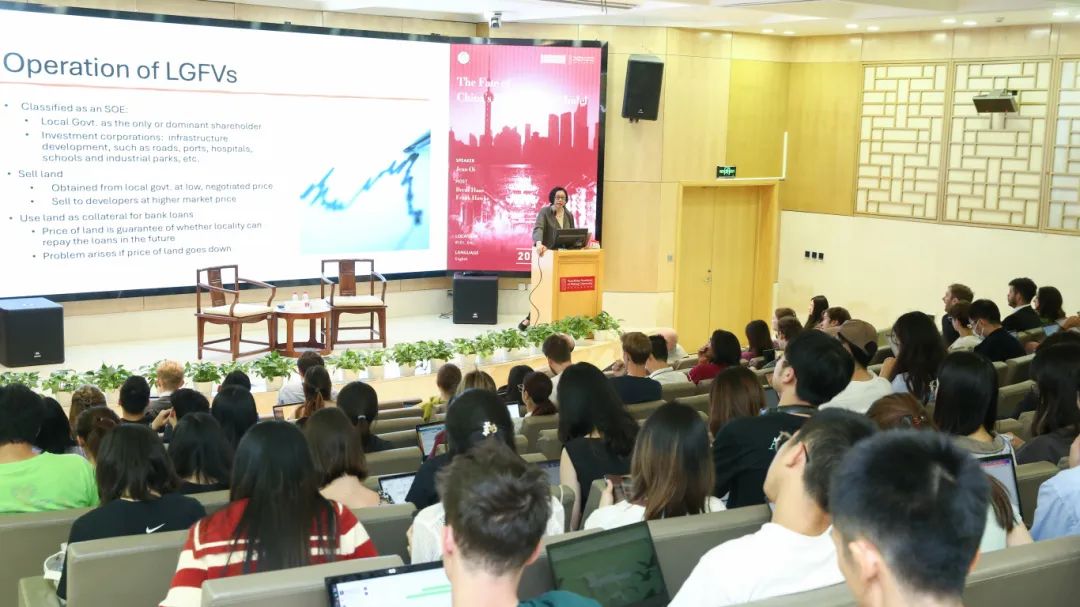
Prof Oi delved into how local governments could leverage AI, intelligent manufacturing, emerging industries, logistics, and other modern technologies to cope with China’s fast-changing development model. She noted that local governments make the best use of land by building industrial parks because local governments can earn rental income by leasing warehouses, factory buildings and other facilities to enterprises based in the parks. Drawing on her interviews with the fiscal bureau officials, she noted learning that industrial parks would be part of an extensive strategy to move away from traditional land finance. Local governments seek funds and support through initiatives like the Belt and Road Initiative (BRI), maximizing profits from land units. With an investment strategy like this, local governments have easier access to funds and loans from the central governments to promote infrastructure construction and development of industrial parks.
Despite these efforts, fiscal challenges remain. The “key transaction” of 1994 in the central-local fiscal relations is disintegrating, with local authorities increasingly dependent on central government support and special bonds to deal with local government debts. Banks are asked to extend payment terms, shifting debt burdens from local governments to the financial sector. She argued that the new strategies cannot replace the current land finance model and eliminate fiscal deficits. Prof. Oi noted that China would need an all-round fiscal reform, including a reexamination of the 1994 reform of its fiscal system since it assumed continuous local government income, which is no longer the case because the current issue of local government debts is caused by insufficient local income
Prof Oi emphasized the need for the Chinese government to locate profitable emerging industries and the conditions necessary for their success while recognizing the importance of relations between the private sector and the state. She also questioned the global market’s capacity to absorb products from new industrial centers in China, warning of potential overcapacity and market rebound. Despite all the efforts of local governments to cope with challenges from emerging industries and global strategies, such efforts are not 100% guaranteed to remove fiscal deficits or for long-term success. More studies are needed to understand the implications and effects of evolving strategies.
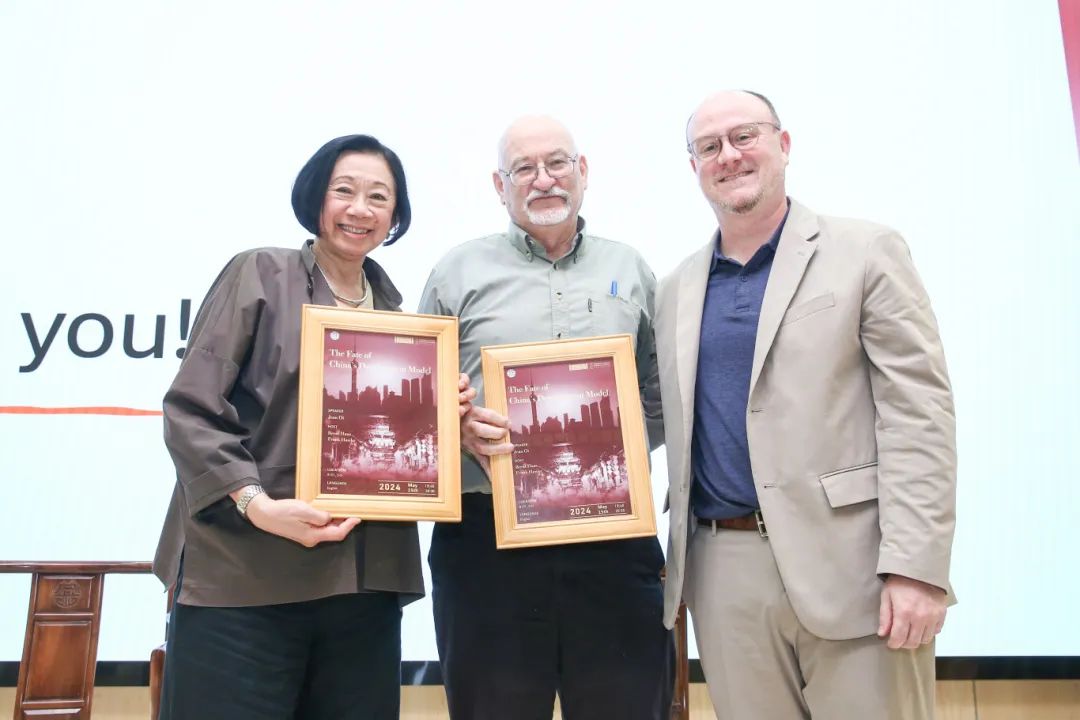
Q&A Time
Q: You mentioned industrial and integrated production parks, all on the supply side. How does such development solve the demand-side problems China faces? Is there a fully sustainable solution to domestic demand to prevent China from overcapacity issues like those in the solar PV panel market?
A: I think planning, whatever type it is, must be done on the corporate level and be market-effective. In a capitalist country, corporate-level planning is based on hard data. If someone is doing something and does better than I do, I’m wise not to do it. But if we can redirect production to another country, we can create jobs and market there and avoid a market rebound, thereby stabilizing demand. It is one solution.
China’s current investment-driven, export-oriented growth model must pivot towards a consumption-driven economy for long-term sustainable development. It’s the proper driving force of the economy. Though currently undermined by economic challenges, consumer confidence can improve over time. China has to create a more consumption-driven economy. There are many difficulties in the current model. However, companies engaging with healthcare and elderly care services have leveraged the demands of an aging population. Many of these companies are private and are major market players in innovation and employment.
Q: There are many industrial clusters in manufacturing, but several industrial parks are idle. Few young people volunteer to work there, preferring white-collar jobs in large cities. What would happen if this situation continues in China?
A: Many researchers are discussing similar problems. Young people tend to “lie flat.” They decide to get away from fierce competition. They are reluctant to work. They prefer staying at home. It’s a problem China must face because it leads to increasing production costs and a shortage of labor force.
The most notable phenomenon is the application of autoboots and automatic production lines. In a large factory, few workers can be seen, except some riding scooters and shuffling to attend to the machines. There seem to be too many holders of bachelor’s degrees and higher degrees because of the expanded enrollment of universities, particularly substandard universities.